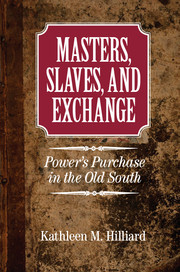6 - The Choice
Published online by Cambridge University Press: 05 June 2014
Summary
My husband was a slave – he hired himself and worked hard and saved his money and bought himself – he then married me and afterwards bought me of my master about 30 years ago. My daughter Bettie was then two years old and my husband and I bought her – that is the way we became free – we then all worked hard and saved our wages until we could buy the place where I now live.
Commenting on eighteenth-century probate inventories, Ann Smart Martin has characterized the furniture, silverware, candlesticks, bedding, and other material goods represented therein, not as a snapshot of spending and acquisition, but rather as a representation of a lifetime of consumption. Although she does not provide a clear timeline of purchase, through her 1873 petition, Annie Smith relayed a similar story to members of the Southern Claims Commission in Stafford, Virginia. The purchase of herself, her husband, and her daughter surely involved careful planning and, likely, material sacrifice.
What were some of these sacrifices? Smith did not elaborate, but the foregoing chapters indicate that a vast array of material goods were available to slaves looking to spend their money on more immediate needs and desires, essentially creating a material image of themselves and their surroundings, however temporary, that was markedly different from the ones prescribed by their masters. Harriet Jacobs, a woman who eventually would appropriate her body through theft rather than purchase, commented on the drab clothing provisioned by her master. Regarding the “linsey-woolsey dress” supplied to her and her fellow bondwomen every winter, she exclaimed, “How I hated it! It was one of the badges of slavery.” As we have seen, through engagement in the internal economy, enslaved men and women could replace material “badges of slavery” with, presumably, markers of freedom – a gold watch, a silk vest, a dram of liquor drunk in a tavern with local white and black men. They may have dreamed of one day purchasing themselves or their families, but the risks, limitations, or simple impracticalities of the marketplace for slave bodies often made more immediate material spending more gratifying.
- Type
- Chapter
- Information
- Masters, Slaves, and ExchangePower's Purchase in the Old South, pp. 154 - 181Publisher: Cambridge University PressPrint publication year: 2013

